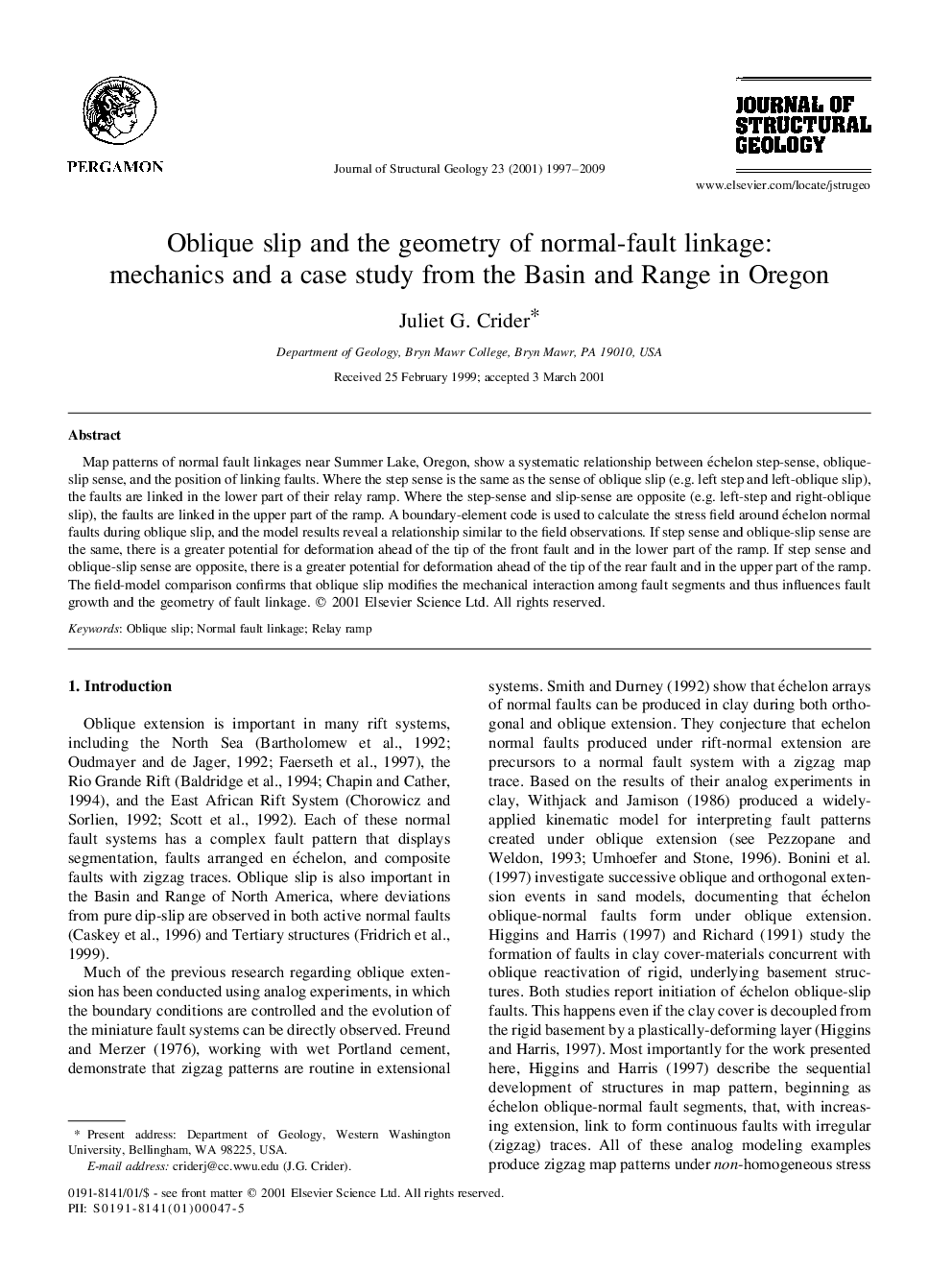| Article ID | Journal | Published Year | Pages | File Type |
|---|---|---|---|---|
| 4734551 | Journal of Structural Geology | 2009 | 13 Pages |
Map patterns of normal fault linkages near Summer Lake, Oregon, show a systematic relationship between échelon step-sense, oblique-slip sense, and the position of linking faults. Where the step sense is the same as the sense of oblique slip (e.g. left step and left-oblique slip), the faults are linked in the lower part of their relay ramp. Where the step-sense and slip-sense are opposite (e.g. left-step and right-oblique slip), the faults are linked in the upper part of the ramp. A boundary-element code is used to calculate the stress field around échelon normal faults during oblique slip, and the model results reveal a relationship similar to the field observations. If step sense and oblique-slip sense are the same, there is a greater potential for deformation ahead of the tip of the front fault and in the lower part of the ramp. If step sense and oblique-slip sense are opposite, there is a greater potential for deformation ahead of the tip of the rear fault and in the upper part of the ramp. The field-model comparison confirms that oblique slip modifies the mechanical interaction among fault segments and thus influences fault growth and the geometry of fault linkage.
